CCJC Audio Podcast Episode 00062, Season 2
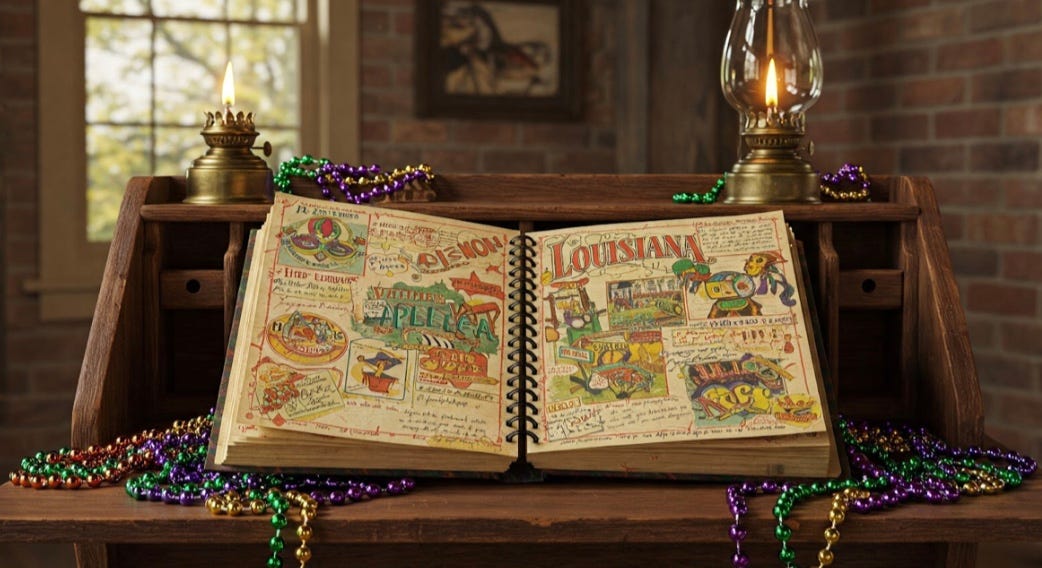
Standing in the Square of Compassion - Looks a Little Lonely
Continuing Cajun Chronicles Podcast’s exclusive story about how J. W. Gigi’s education in becoming a Cajun/Creole traiteuse healer is a journey back into the past. It’s one that our staff believes applies to the challenges we are all facing today in a time of great migrations, turmoil, filled with many people starting over.
My Education as a Traditional Healer
In a single moment in time, your life and the lives of your family members, can dramatically change. - J. W. Gigi
This was one of the primary lessons I learned in my education as a Cajun Creole traiteuse. Hardships and disasters -- They've always been a part of the heart in the heart of many Louisiana souls. Our people suffered far more than most people realize and the true story is seldom told.
Now, my becoming a Cajun faith healer was greatly influenced by two things:
The long term effects of three natural disasters, that overcame my Cajun Creole family in the early 1900’s that resulted in them moving away from Louisiana to the American West
Being the great-granddaughter of a Cajun and Creole traiteuse
Traditionally, I came by the second influence naturally. The rituals and teaching of a faith healer are passed down to the opposite gender. My great-grandfather had to pass it down to a female. His mother, Alexandrine Daigle, taught him. Originally, I wasn't the chosen one, my mother was (his favorite grandchild). She, being a strong-willed child, who wanted no part of old time lessons.
Therefore, I came to this via default, mostly because I was sent to my great grandparents during school vacations. Memere Hirma was also a daughter of a traiteuse healer, Julienne Marie Babin. These two were more than elderly. Indeed, Emile died just a few months short of being one-hundred. So the things I learned were not typical of a child of the 1950’s or 1960’s.
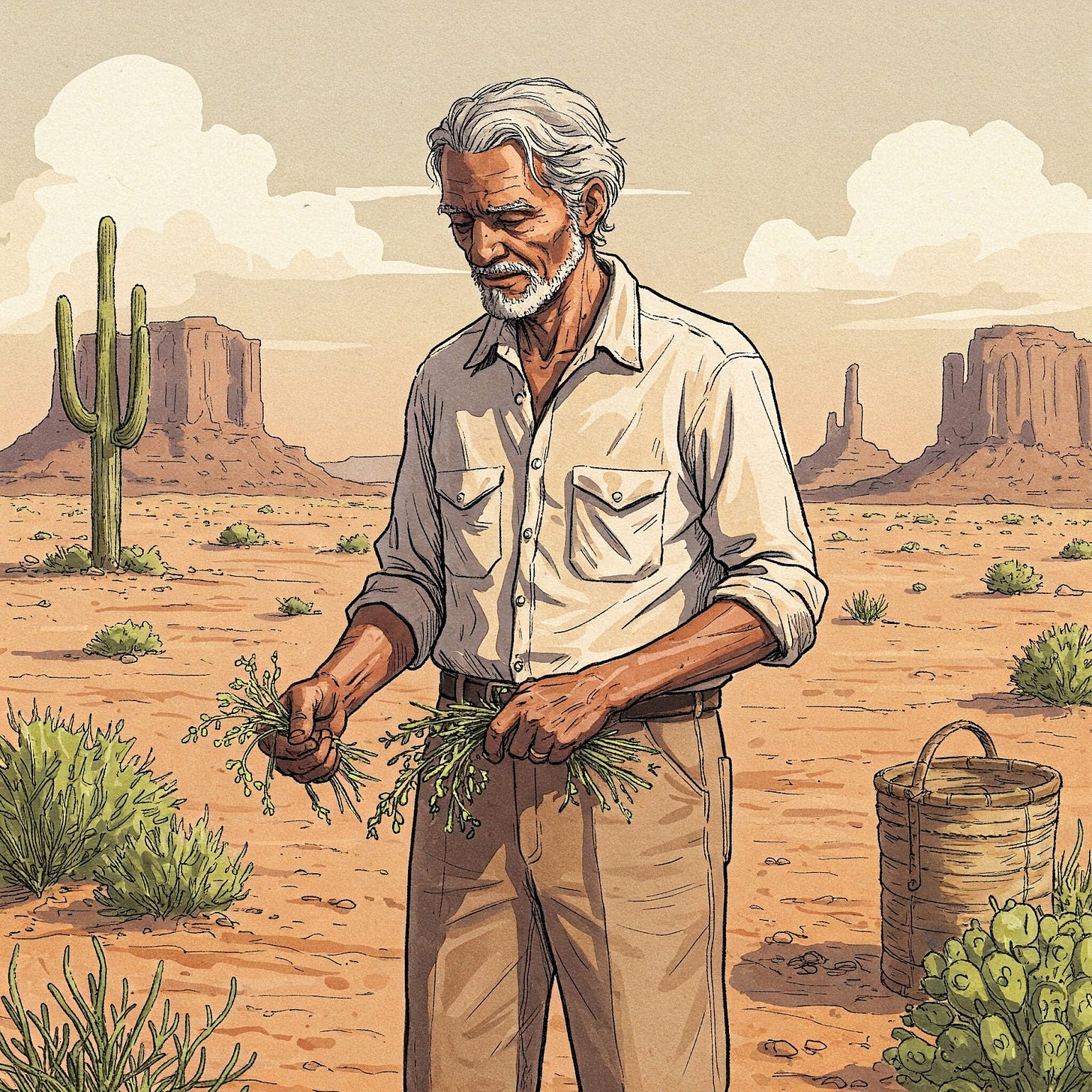
Longevity runs back generations on all sides of my family tree. Even today, my Cajun Mama is in her 90’s and while frail physically, can mentally challenge any one half her age. Keeping up with her is more of a daily sprint in terms of her energy.
In case you aren't familiar with this cultural practice, the traiteur or traiteuse (female) must be asked to "cure" someone. Normally, the healer won't offer help unless the problem is so severe, that they can't ignore the patient. They seldom ask for payment, and many refuse to accept gifts in exchange for their services.
Being a treateur is a very lonely and individual endeavor. The Cajun healer has to be able to sense or feel what is wrong with a person. You either are one in your heart or you aren't. You can learn everything there is about the folk remedies, and be useful, but not a Cajun or Creole healer.
You have to put every ounce of your energy onto your patient. You have to have great faith in God, as you heal no one, only God can heal. This is where it gets complicated, because all of the folk remedies you've learned from your mentor also come into play.
Additionally, traditional medicine practiced by real physicians, is also included in the mix. It's a complicated Cajun Creole Catholic thing that's difficult to explain in English. However, I think if you read all parts of this series, you'll come to understand what I have no words for.
As the great-granddaughter of one Cajun traiteur (faith healer), Emile Evariste Navarre, he had a tremendous influence in my cultural and natural education, even though he died when I was thirteen. As a child, he often filled my head full of traditional Cajun and native American "cures." Memere was part Creole and she filled in the gaps in terms of knowledge. He was grooming me to take over his clients someday.
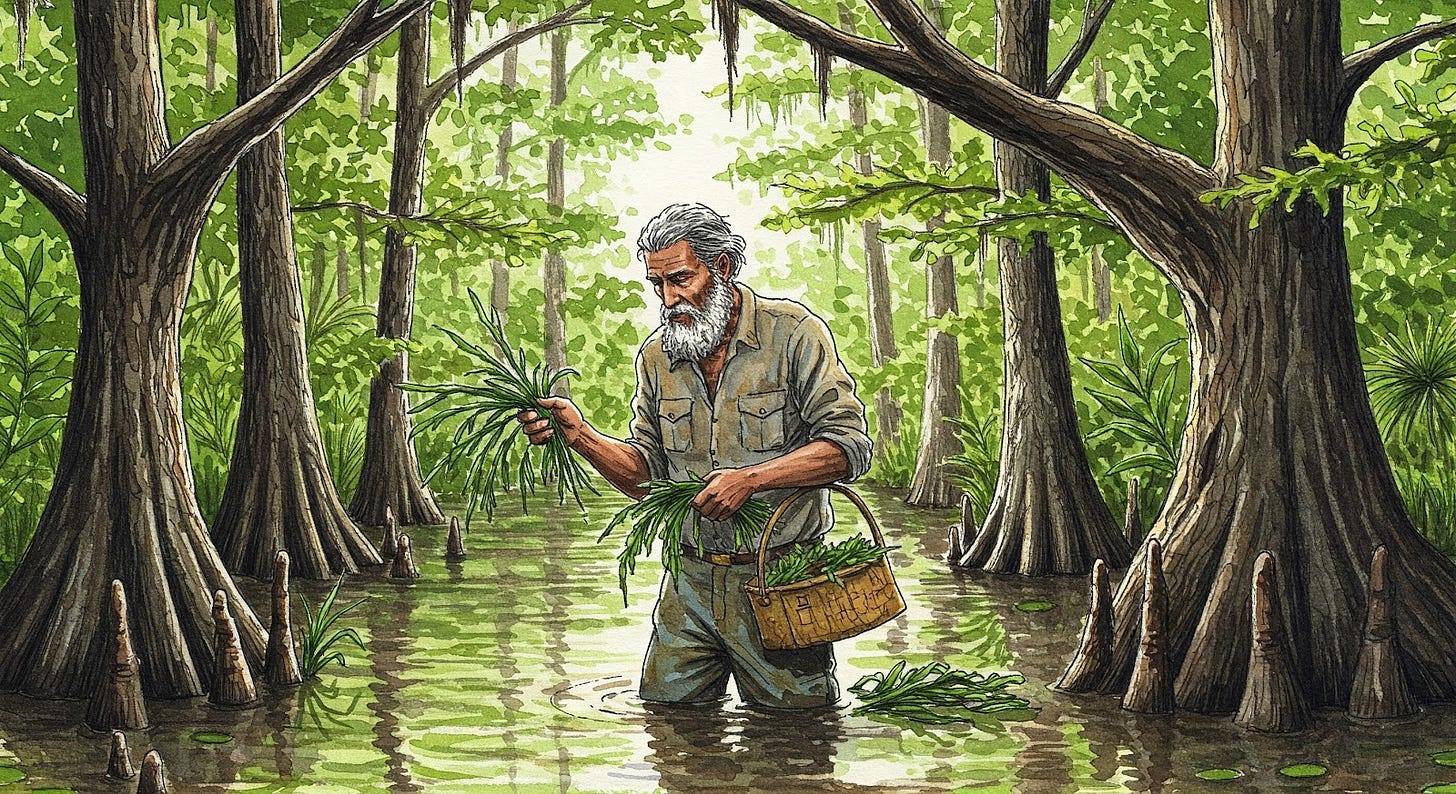
This was interesting considering he had moved thousands of miles from any bayou and his patients were usually either Hispanic or Navajo workers on the ranch. The teachings of both great-grandparents trickled down to their seven children and their families.
My grandfather, Vernon, was their youngest son. To the Hispanic workers, he was referred to as a "Curandero" in hushed whispers. Among the Navajo, the local native healers would often consult him and trade healing secrets, or ask him to accompany them and Papa to accompany them to not only treat people but also to heal animals, especially horses and cattle. — J. W. Gigi
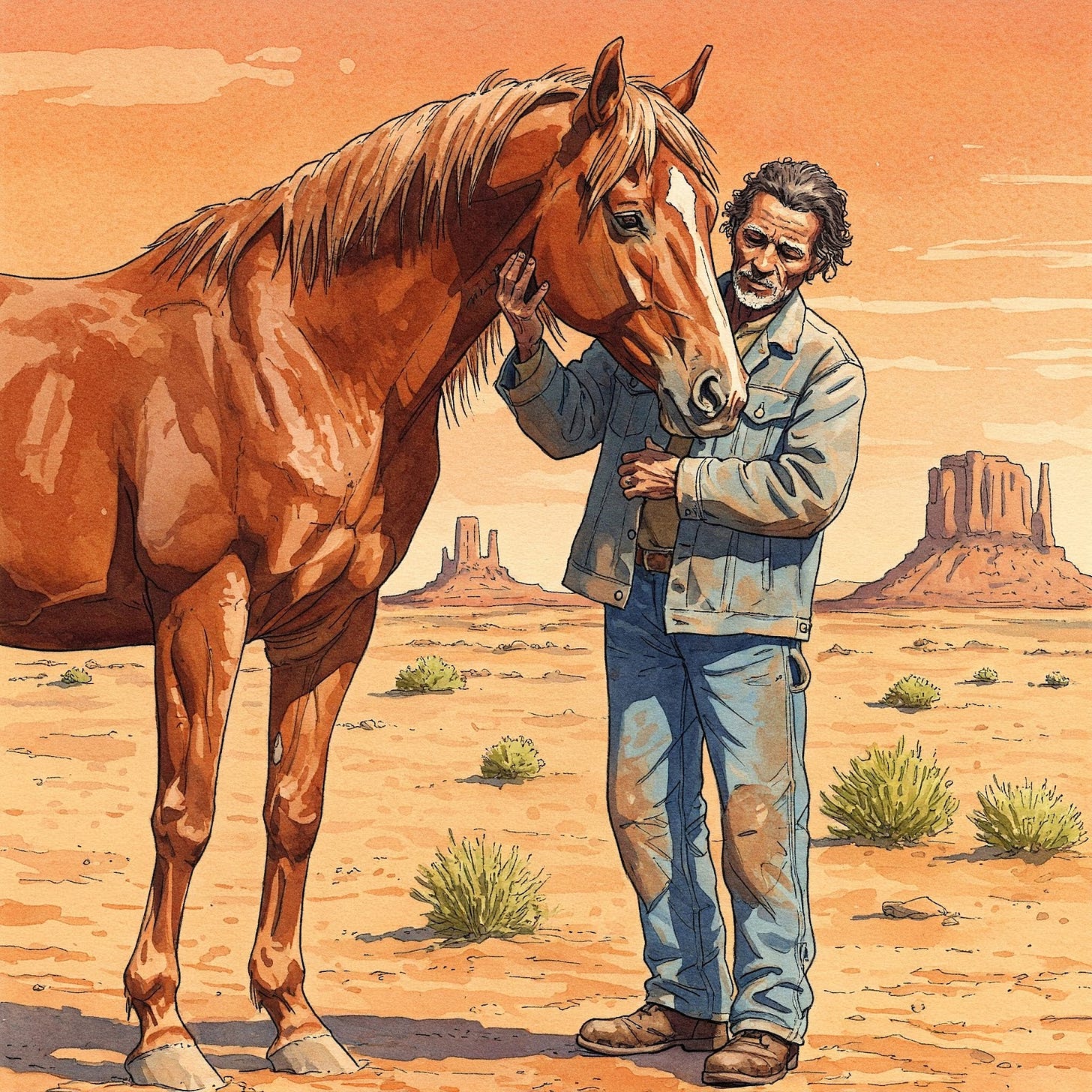
Memere Hirma, deeply Catholic, was always after admonishing me, that it was our prayers that contained the real powers or cures, she would tell me over and over, Papa left the God part up to her.
"Prayers are the whispers in God's busy ears. It is He and He alone who can heal all that ails man." – Hirma Carmelite Marie Robichaux Navarre.
I loved him, but as a child, a lot of his teachings were very hard to understand. Always a skeptical student, certain folk remedies didn't live up to my standards -- especially ones, like burying a potato to cure a wart. Nor was I fond of being made to wear rhubarb root or garlic necklaces. Likewise, collecting spider webs to make a poultice for wounds, wasn't anything a little girl necessarily wanted to do either. LOL
Sometimes, it's not easy being Cajun and Creole. Papa was part of a dying breed, even back in the 1950’s and 1960’s. Born in 1863, he was born in a time before hurricanes had names. He was born in a time before there were any true warnings of an impending hurricane (unless you counted the ones provided by mother nature). He was born in a time when people tied themselves and their loved ones to trees to ride out the storm. He was born in a time when there were no safe shelters.
Lastly, he was born in a time when if a natural disaster did occur, there was no one, especially your government to rescue you. No one to help you start over, unless you were lucky enough to have a compassionate extended family, in a financial position to help.
His greatest teaching was about the consequences of how a person handles any disaster, and how the decisions you make in times of trouble can change the lives of not only your immediate family in the here and now -- but for generations to come.
You are about to hear the true story of one Cajun faith healer and his family as they assimilated into American culture. Their losses and their gains were the foundation of my education as a traiteuse. I'm telling it in the manner that Emile taught me, in English sprinkled with Cadien -- for that was his speech pattern. I'm telling it in story form, for oral history is how he taught our Acadian, Native American, and Cajun/Creole history. I'm telling you this, because it applies to our world today more than ever.
All Cajun healers have a specialty. Mine is in part sharing what I know to let others help themselves. It's also about Louisiana multi-cultural history, language, and storytelling preservation. Combined that is really all I have to give. It is the secret ingredient of my powers.
To tell you about what I was taught, we have to go back in time to my Cajun Mama and Papa’s story, one that I personally witnessed in the early 1960’s.

Surviving A World of Feux-folets -- Phoenix, Arizona - 1962
"I was born in a place the Chitimacha called TCHAKAOULA in 1863. Chacahoula is located on the Bayou LaFourche in Terrebonne Parish, L'ouisiane." - EMILE NAVARRE
Was armed conflict just hours away? Virginia certainly didn't know. Feux-folets used to be found only in the bayou country, particularly in the swamps and cypress forests of Emile's birthplace, Chacahoula, Louisiana. Today, however, they had been summoned fifteen hundred miles to the far away state of Arizona.
They had been lured from the swamps to the desert by special request of a ninety-nine-year-old, despite his blindness of more than eight years. He did not have to see them, to know that their glowering lights were busy in his room.
After arriving at Boyd’s Nursing Home, Virginia sat beside him, lost in a life span of reminiscence of her childhood with him. She was overwhelmed by her awareness of the inescapable fact that he was dying. She felt guilty knowing that for more than a year, she hadn't taken the time to come to see him.
This fact alone made her head hurt. Throughout her life, he had given her so much of himself. Yet, now she numbly sat, unsure she had anything left to give back to him in his last hours.
In past visits, he had always recognized his p'tite fille - granddaughters' voice instantly. However, this visit was different. His recognition of her was not immediate, nor constant. Noncle Claude had told her Emile's mind operated better some days than others. Today was not one of those better days.
Lost In A World You Don’t Understand
As Virginia listened to the din of his roommate's television, Emile began babbling to no one in particular. The newscaster seemed to be in agreement with her Grandpere's mumbling opinions about being lost in a world of les feux-folets.
President Kennedy was once again facing the press on the still escalating Cuban crisis. It occurred to Virginia that Castro was similar to one of Emile's feux-folets. He too, appeared to be a false guiding light, leading the Cubans and perhaps the rest of the world, into a hopeless world of evil and suffering. Men like her husband had stopped in their tracks at Castro's communist threat. They were the hysterical minority who had felt that disturbing gut feeling that the more sensible majority ignored on a more conscious level.
"Perhaps, we live in a world of many feux-folets," she quietly mused, knowing her statement would fall on all too agreeing ears had Emile been fully conscious.
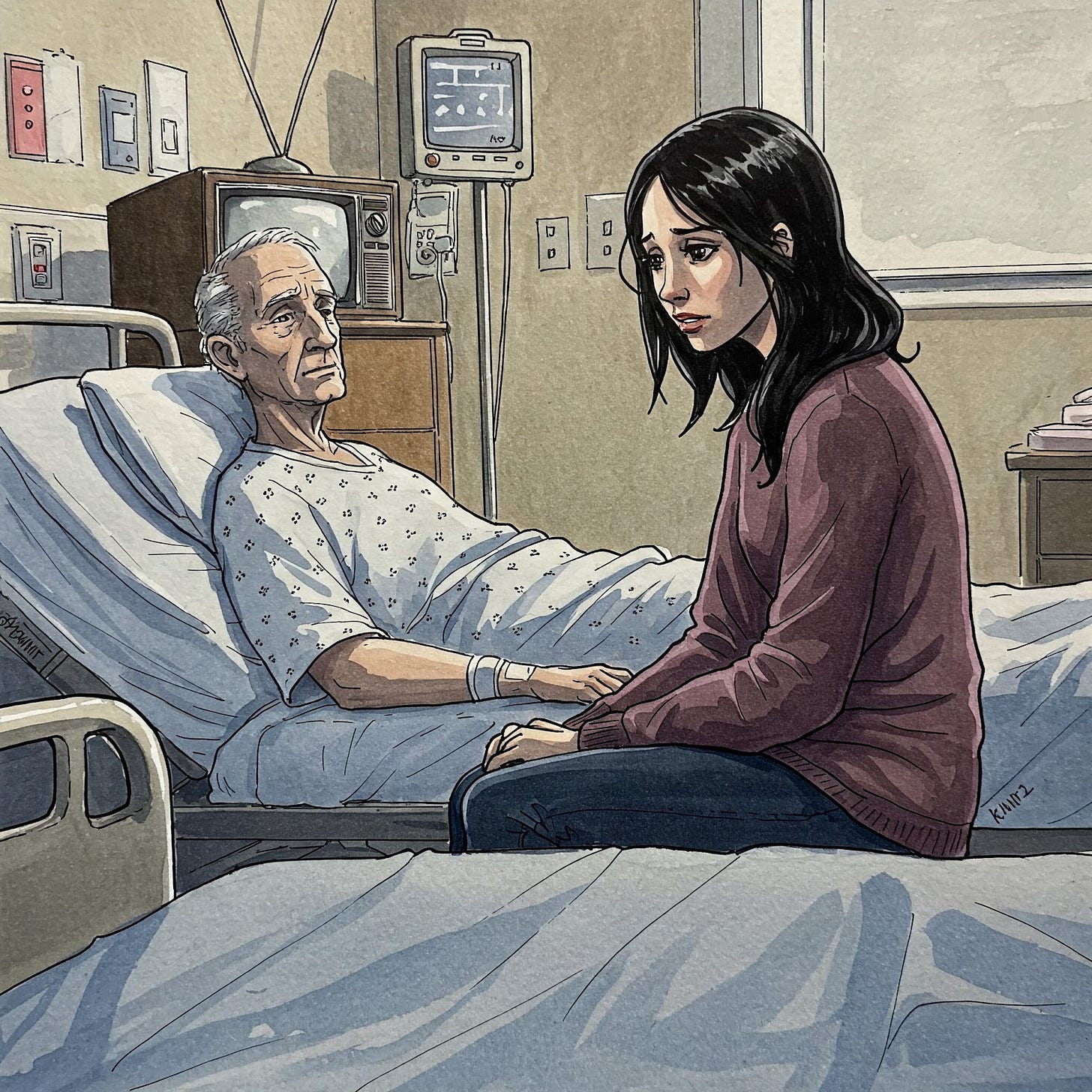
Cuban Missile Crisis & The Legend of the Feux-folet
In Cajun legends, Emile's feux-folets were once very bad men who had become possessed by the Devil. Their job on earth was to find other people who could also be turned into feux-folets. They appeared as Devil lights, whose sole purpose was to tricher - trick you.
If you were traveling in Louisiana, they would appear before you as a guiding light. They looked like balls of fire drifting up from the ground. They bounced off fence posts, sometimes lingering to play with the airy arms of Spanish moss hanging in the trees. Occasionally, they would even hurtle right at you. If you followed one, you could be sure it would purposely lose you in the swamp. Then, you would never be able to get to your destination.
As a child, Virginia would sit on Emile's knees as he commanded her to look closely at his Arizona version of them. He would gently cup her head in his hands, pointing her attention to the distant lights beyond the porch.
"Ga! Ga! - Look! Look! They are starting to dance around! Ga la bas! - Look there! See how they jump up in the air, zigzager . . . . zigzager . . . . Zigzagging all over the place!" All the time, he was giving her a crazy jig ride on his knee.
"Yes, mon chere ti chou - my dear one, the feux-folet is after us all. However, you can turn the feux-folet away if you pray, because Dieu - God is stronger than Diable - the Devil," he would sternly caution.
Remembering those warnings, Virginia smiled to herself. Emile's personal feux-folets were sure to vanish. His faith in God was as clear as the black and white picture of President Kennedy now appearing on the news. His faith was so strong, it was still the only thing Virginia counted on.
"I just wish I could be so sure prayer would make our world's feux-folets go away," she signed as she hesitantly picked up Kesey's novel, One Flew Over the Cuckoo's Nest. Reviews said it was a good satire on the dehumanization of Western society, but she was having difficulty getting into it. To her, it appeared as disordered as everything else in 1962 did.
An incomprehensible war raged in Vietnam. Even the so-called popular "soup can art" of the times seemed confusing to Virginia. It was beyond her grasp how anyone could consider a picture of one hundred cans of soup - art. She felt as though the world had spun out of control, just as her own life had, in small almost indefinable ways.
The First Reverie - A Twisted Mashed Potato Dance
Over in the corner of the room, Virginia's daughter was practicing the "Mashed Potato," a variation of the popular "Twist" dance steps. Virginia wondered what Emile would think if he was conscious. In his day, everyone danced as couples. Now, one could only wonder what kind of dances were to come in the future. She put her book aside and consoled herself thinking about last night's move, Who Shot Liberty Valance?
"At least I can still go to the movies and understand the plot," she whispered to a now quiet Emile.
Holding her beloved Grandpere's hand, she too drifted off. Cote a cote - side-by-side, two sleeping souls, both content with sleep laden memories, laced and embellished with dreams. Both preferring to stay in the doucement - slow Cajun two-step dance of their collective memories. In a world not of their own choosing, slumber was their only deliverance. There, they could continue a sweet enticing promenade, over the reality of doing the current popular twisted to music belonging to others.
Tempe, Arizona - 1930’s
Virginia's dreams led her back to the cattle ranch where she grew up. She had followed her grandfather to the flagpole and watched him raise both flags. Today was not a holiday. For as far back as she could remember in her young life, she had observed this morning ritual. Without thinking, Virginia gave voice to her whining, "Pepere, I don't see why we have to raise flags in front of our gate every day. No one else has them."
Emile scolded Virginia, "It is very important for you to remember who you are and where you came from, chere ti chou. You are not just Virginia Navarre, born in Arizona. You must never forget that.” Look at the bottom flag, the one Memere made.
"You are an heir to a family whose flag declares our identity and origins for the entire world to see. That flag is like the wooden and iron placards that hang over the entrances to our neighbor's lands, bearing the cattle brand of their particular ranch.
First and most important, just below our surname in the center, Memere placed an outline of the state of L'ouisiane. Then, she positioned a wolf beneath a lone tree enveloped by a starry winter night on the right-hand corner of the blue background. This is her tribute to our Huron nation ancestor, Catherine Annennontak.
Along the left side of the flag, she appliqued three silver fleurs-de-lis' on a dark blue stripe, right beside the word "Acadia." This is to remind us of our French origins and heritage. Lastly, she embroidered the words, "J me rappelle" - "I remember" at the bottom. This because she especially wants "you" to remember all that we have taught you."
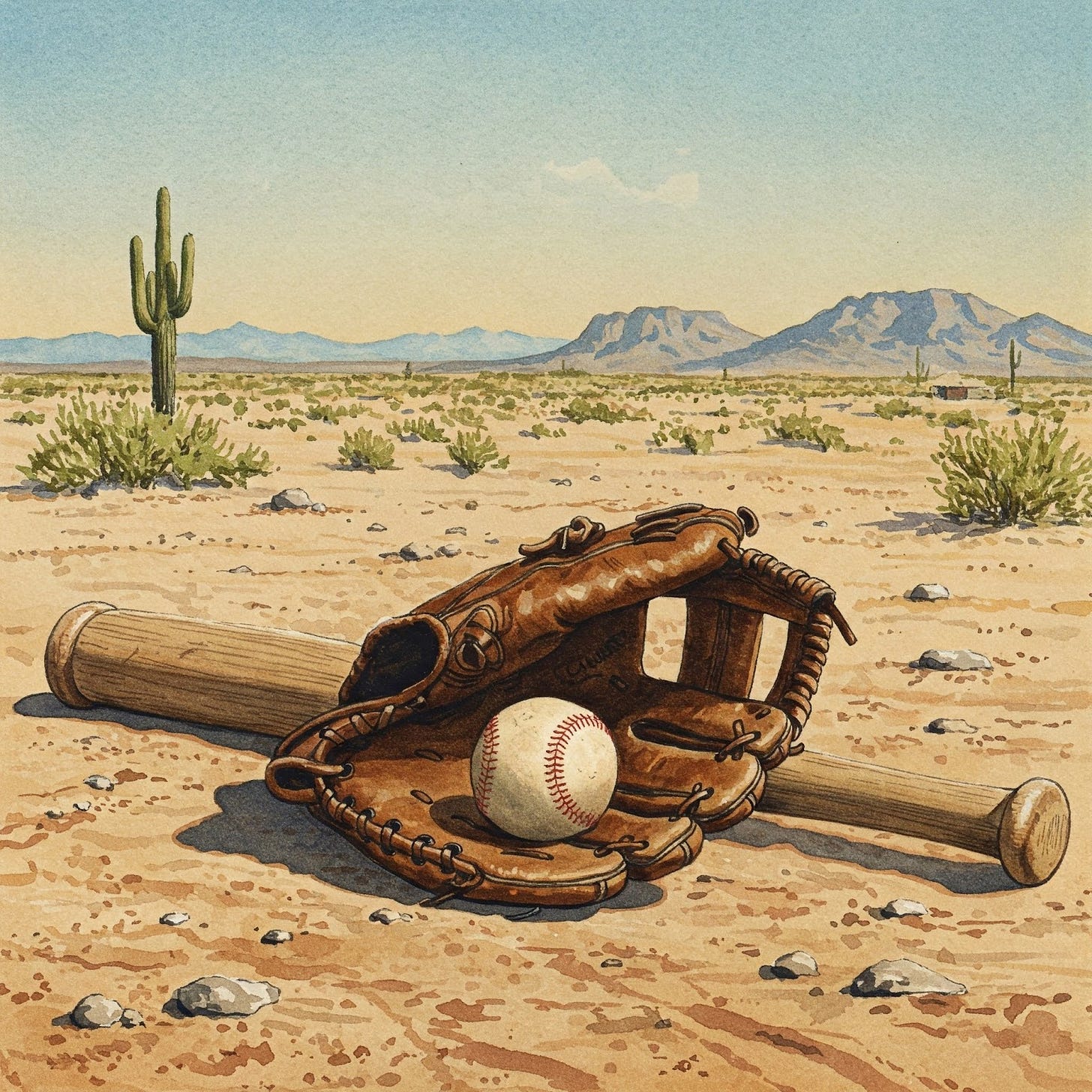
The Baseball and the Bat
"Above this flag, flies another proud flag, whose red, white, and blue smile upon these symbols. You must tell everyone you meet, J' suis Acadienne. J'suis Cajinne. Yo soy Acadiana. I am Acadian. I am Cajun.' Just like our two flags tell everyone what kind of people live here on this ranch."
Virginia hung her head in silence at his proud explanation. Only eight years old at the time, she couldn't picture herself telling anyone about being Cajun. To freely admit her ethnic heritage wasn't going to help her situation.
Already, the other kids in school didn't accept her. Her darker, more pronounced facial features caused teachers to scrutinize her and whisper. Her Anglo looking classmates teased that she belonged in the "Indian school." Even the Mexican students eyed her suspiciously.
The fact that her father was both Deputy Marshall and the Truant Officer, didn't help her popularity either. Only the Navajo boys of the ranch's seasonal workers would play with her. Virginia sighed, kicked the dirt, and sulky-like said to herself, "I know they only play with me because I own the baseball and the bat."
Up Next? Virginia and Her Cousin Were Sent to the Indian School
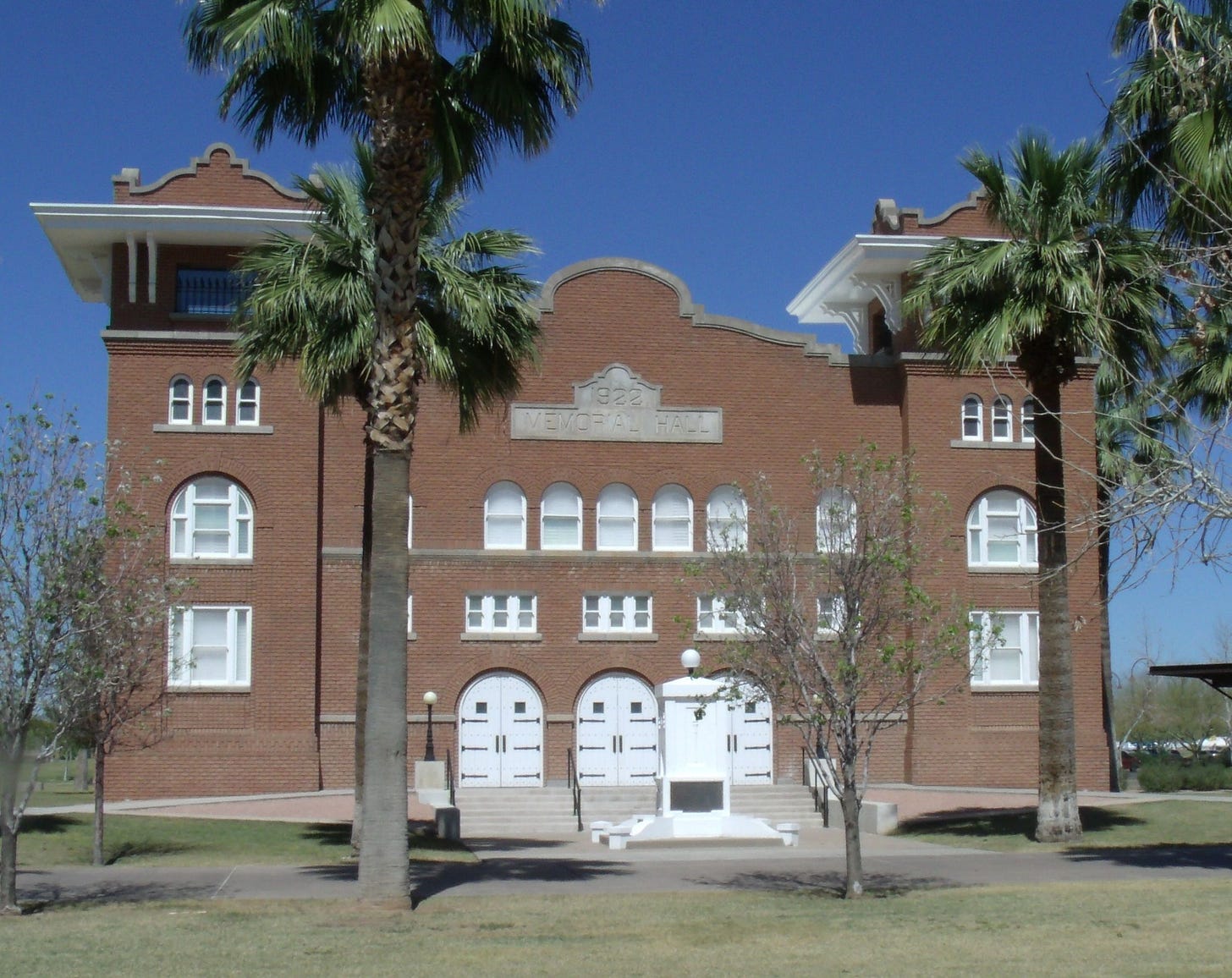
Still Want to Know More?
If you are hankering for more than just the regular Cajun Chronicles Podcast series episodes, if you want to dive deeper into the swamp of our collective storytelling, then it’s time to join the family! Subscribe annually and unlock the full treasure chest. You’ll get bonus episodes that will have you laughing till your sides ache; behind-the-scenes interviews that peel back the curtain of our crazy process; early access to episodes before they hit the airwaves, and live Q&A sessions where you can swap swamp stories and ask your burning questions.
And for our extra-special patrons, well, we’ve got a little lagniappe something extra: Think personalized shout-outs, digital postcards from the bayou, and maybe even a few free e-books and recipes. All straight from the staff of Cajun Chronicles and our families kitchens. So come on in, grab a virtual beignet, and let’s make some memories to take your mind off all that stuff that overwhelms us that for right now are beyond our control.
While most of our tales are inspired by real Louisiana and New Orleans history, but some details may have been spiced up for a good story. While we've respected the truth, a bit of creative license could have been used. Please note that all characters may be based on real people, but their identities in some cases have been Avatar masked for privacy. Others are fictional characters with connections to Louisiana.
In the case of this series, there is no fiction, this is one small part of the life story of J.W. Gigi and her Cajun Creole family.
A Word of Wisdom:
As you read, remember history and real life is a complex mix of joy, sorrow, triumph, and tragedy. While we may have (or not) added a bit of fiction, the core message remains: the human spirit's power to endure, adapt, and overcome.
© Jerilee Wei 2025 All Rights Reserved.




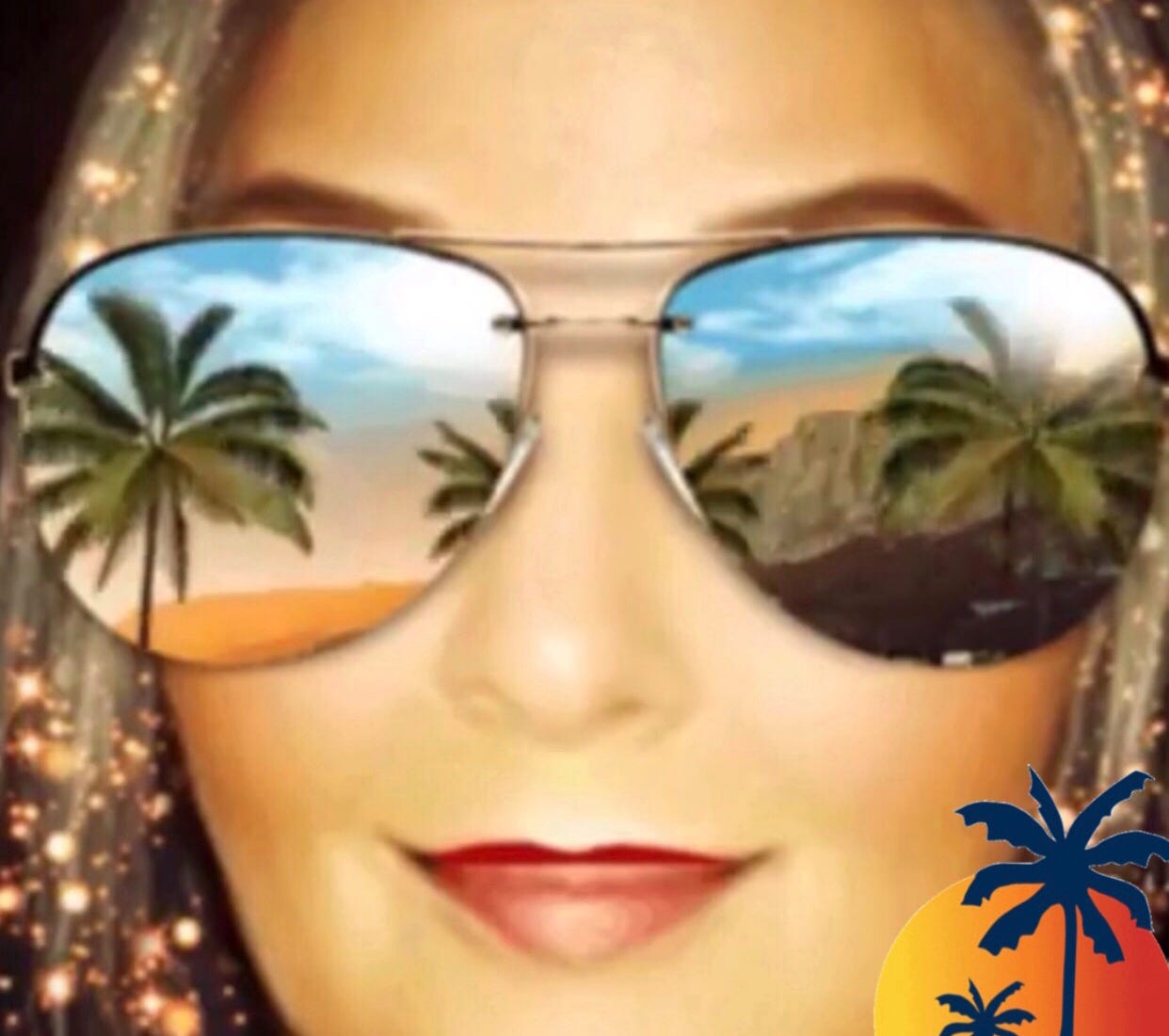








Share this post